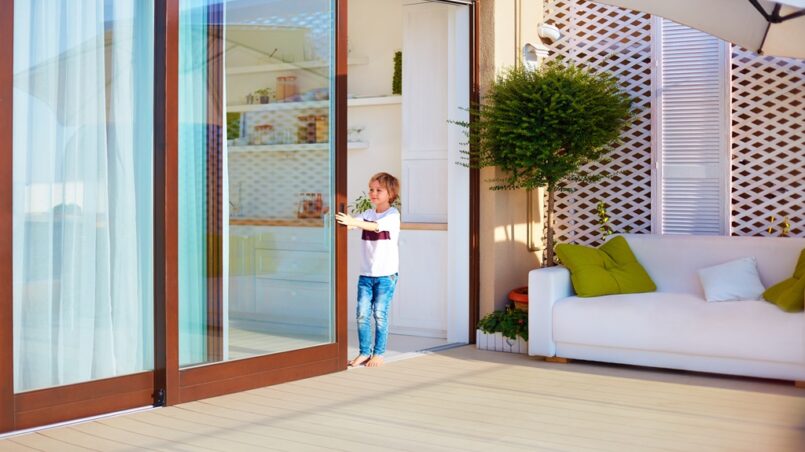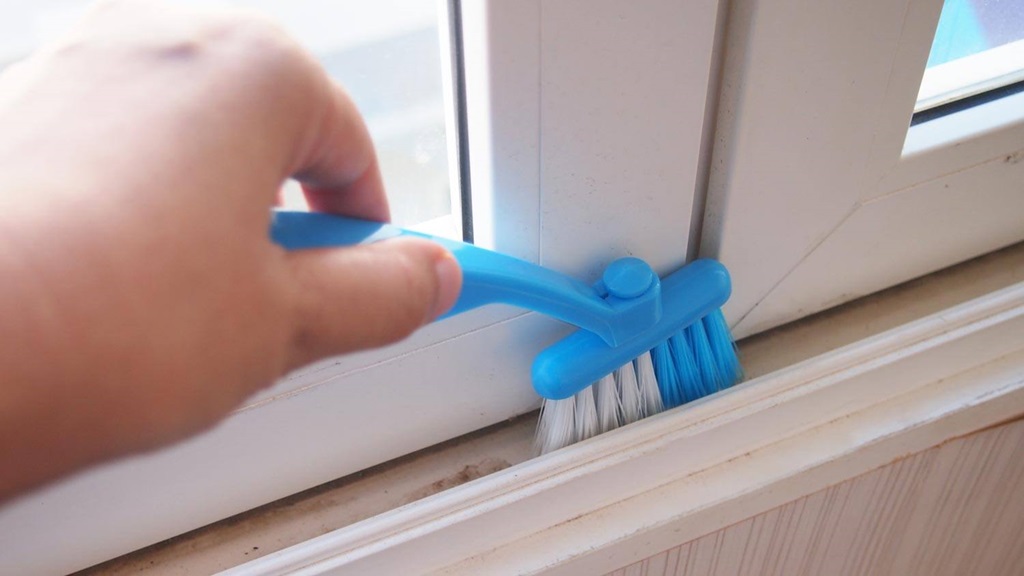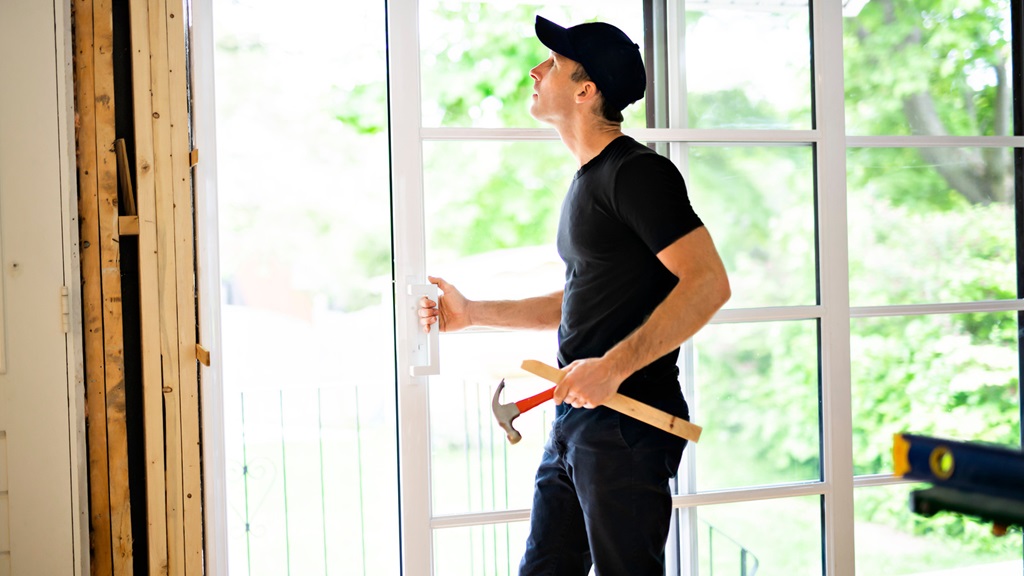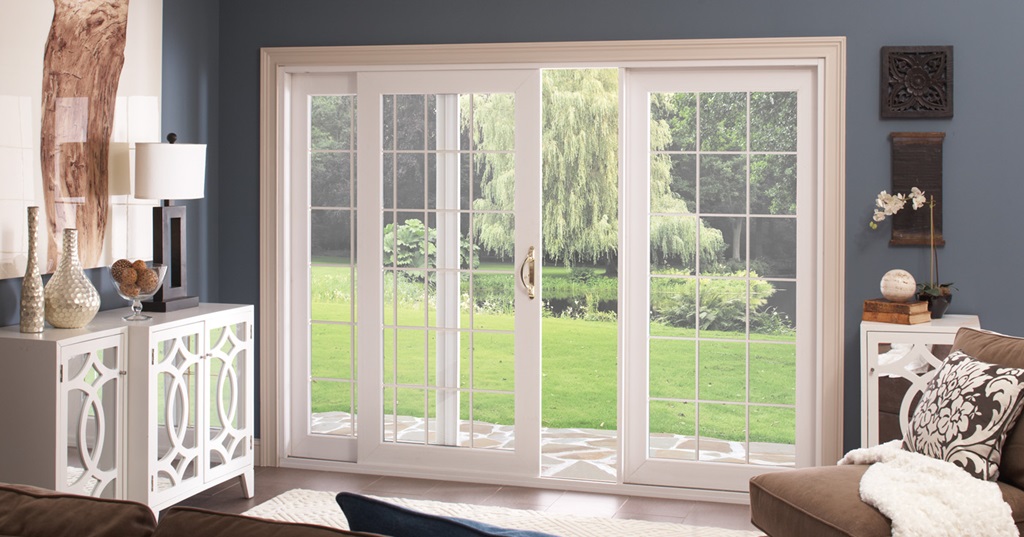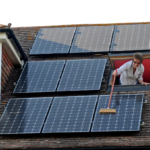Having a patio door that doesn’t slide smoothly can be a real headache. Sticking, and jamming doors make it difficult to get in and out of your home and can even present safety issues. But the good news is that with a little time and effort, you can get those patio doors sliding like new again. In this article, we’ll walk through how to make patio door slide easier and simple DIY solutions to fix them.
Why Patio Doors Get Stuck and Difficult to Slide
There are a few main culprits when it comes to sticky patio doors:
The Buildup of Dirt and Debris
Over time, dirt, dust, pollen, and other gunk can build up on the tracks of your patio door. This debris acts like sandpaper, creating friction and drag on the rollers. Cleaning the track is often the quick fix to get patio doors sliding smoothly again.
Misaligned Doors
If the door is sagging on one side or not sitting completely straight in the frame, it will bind and rub against the jamb. Proper realignment is key to restoring proper operation.
Worn Out Rollers and Hangers
The small wheels on the bottom of the door and the hardware pieces they attach to are subject to a lot of force and wear. After years of use, they can become loose, bent, or simply worn out. Replacing damaged rollers and hangers may be necessary.
Problems with the Threshold
The sill or threshold of the door takes a beating from weather and use. Cracks, raised areas, and uneven spots can all cause dragging and sticking issues.
Issues with the Screen Door
Improperly installed or damaged screens can interfere with the operation of the patio door. Loose screen frames should be tightened and bent tracks straightened.
Now that we’ve covered why patio doors get stuck, let’s go over step-by-step methods for diagnosing and fixing these common issues.
Easy DIY Solutions for Sliding Patio Doors
Many stuck patio door issues can be resolved with simple DIY solutions using common household tools and supplies. Here are the best methods to try, starting with the easiest fixes:
1. Clean the Tracks
Dirt buildup in the tracks is one of the most common reasons patio doors don’t slide well. You’ll need to clean both the interior and exterior tracks for the door to operate smoothly.
Supplies Needed:
- Vacuum cleaner
- Stiff bristle brush
- Bucket of warm water
- Mild detergent
- Clean rags
- Rubbing alcohol
- Silicone spray lubricant
Steps:
- Use the vacuum crevice tool to remove loose debris from the track.
- Mix warm water with a little mild detergent in the bucket. Dampen a clean rag in the solution.
- Use the rag to wipe down the exterior track, scrubbing with the brush to dislodge stuck-on gunk.
- Repeat steps 2-3 to clean the interior track.
- Go over the tracks again with a clean rag dampened with rubbing alcohol to remove any oily residue.
- Wipe the tracks completely dry with a clean rag. Make sure no debris remains.
- Apply a silicone spray lubricant to the cleaned tracks. Run the door back and forth to distribute the lubricant. The door should slide much easier now.
Tip: Schedule seasonal track cleanings to prevent excessive buildup.
2. Check for Proper Door Alignment
If cleaning the tracks doesn’t fix the sticking, the door itself may be out of alignment, causing it to rub and bind against the frame.
Supplies Needed:
- A long level or straight edge
- Phillips screwdriver
- Wood shims
Steps:
- With the door in the closed position, check the vertical alignment with a level. The door should be plumb and not leaning or sagging on one side.
- If out of plumb, shim under the side that is sagging until the door sits vertically straight in the frame.
- Next, check for proper horizontal alignment. Place the straight edge on the side jamb, it should lightly touch both the jamb and door edge without gaps.
- If there is space between the jamb and door edge, tighten the horizontal adjustment screws on the hinges.
- Operate the door to test for smooth sliding with proper realignment. The door should not rub or bind against the side jambs now.
3. Inspect and Replace Worn Out Rollers
After years of use, the weight of the door can wear out the end rollers. Sticking and rough sliding can indicate damaged or broken rollers that need replacement.
Supplies Needed:
- Phillips screwdriver
- Replacement vertical patio door rollers
Steps:
- With the door in the open position, inspect each of the roller wheels. Spin the wheel with your finger to check for smooth spinning.
- Look for flat spots, cracks, broken wheels, or seized bearings. These all indicate a worn-out roller that needs replacement.
- Remove the screws at the top and bottom of each roller bracket. Pull the bracket away and slip the old roller unit out.
- Install the new replacement roller unit with the wheels facing outward. Secure the top and bottom screws.
- Operate the door and make sure the new rollers are spinning freely as the door slides. Replacing damaged rollers often remedies sticking issues.
Tip: Lubricate rollers periodically with silicone spray to extend their life.
4. Adjust or Replace Hanger Hardware
Along with the rollers, also inspect the hanger hardware. If the vertical pieces the rollers attach to are bent or loose, it can impede proper door operation.
Supplies Needed:
- Phillips screwdriver
- Pliers
- Replacement hangers
Steps:
- Check the vertical roller hangers on both sides while operating the door. The hangers should remain perpendicular without bending or flexing.
- If they are bent, try straightening them with pliers. If the metal is warped or damaged, replace the hanger.
- Verify the hanger attachment screws are tight. Loose screws can allow play and wobbling. Tighten any loose hanger screws.
- For excessive wear, buy replacement hangers made for your brand and style of patio door. Switching out worn parts restores proper function.
5. Repair or Replace Damaged Threshold
The metal threshold that the door rolls over commonly gets bent, develops cracks, or becomes uneven over time. Issues here can cause the door to drag and not slide smoothly.
Supplies Needed:
- Caulk sealant
- Shims
- Metal threshold bar
- Drill
Steps:
- Inspect the threshold for damage. Check for raised areas, gaps, cracks, or bars that are bent upward.
- For small gaps or cracks, apply caulk to seal and fill in the opening. Allow to fully cure.
- For larger damage, shim under any spots that are higher than others to level out.
- If the threshold bar is bent upward, try tapping it down gently with a hammer.
- For more extensive damage, the entire threshold may need replacement. This involves drilling out the old threshold, installing a new bar, and recaulking. Consider hiring a pro for this job.
6. Adjust and Repair Screen Doors
Sliding screen doors can also interfere with the proper operation of patio doors if they aren’t installed correctly or become damaged.
Supplies Needed:
- Phillips screwdriver
- Wood shims
- Screen roller/hanger repair kit
Steps:
- Check for level and plumb alignment of the screen door similar to the glass patio doors. Shim if needed.
- Make sure the screen is rolling smoothly in its track without rubbing or catching. Bent tracks can be tapped back into shape with a hammer and wood block.
- Inspect the screen door rollers and hangers. Replace any broken or worn parts so the screen operates easily.
- Adjust the screen door sweep seal if it is catching on the threshold. Use shims to raise the sweep up slightly if needed.
- Lubricate the screen track and rollers periodically to prevent sticking issues.
With some adjustment and part replacement, you can get sliding screen doors operating smoothly again.
When to Call a Professional for Patio Door Repair
While many sliding patio door issues can be addressed with DIY solutions, there are a few instances where you may want to hire a professional:
- If the door is completely jammed and you can’t open or close it without excessive force. Attempting DIY repairs with the door stuck could result in breakage or injury.
- If the door is severely out of alignment or has shifted in the frame. This may indicate underlying issues with the frame or installation that require an expert repair.
- If the threshold is damaged to the point that full replacement is needed. Proper threshold installation requires expertise to get the height and seal correct.
- If the rollers and hanger hardware are so worn that they need a full replacement, or the holes they attach to are damaged. A pro can replace components properly or repair structural issues.
- For any problems with the door slab itself – cracked glass, broken seals, major gouges, or scrapes. A qualified glass specialist should handle these issues.
- If there is damage to the door frame like splits in the corner joints, rot in the wood frame, or cracks in the sliding jamb. An experienced door pro can make structural repairs.
- If previous DIY repairs have failed and the sticking and catching issues persist. A technician can diagnose and fix the problem.
- For specialty patio doors like custom sizes or materials. Hire an installer experienced in working with high-end doors.
While minor alignment tweaks, part replacements, and thorough cleanings can be DIY jobs, severe damage or complex installation problems are best left to the professionals. They have the expertise and tools to diagnose and remedy even the trickiest patio door issues.
Pro Tips and Preventative Maintenance
To keep your patio doors operating smoothly for years to come, make the following tips part of your regular maintenance routine:
- Inspect the tracks a couple of times per year and clean them as soon as you notice debris buildup. Don’t let it accumulate.
- Lubricate the rollers and tracks with silicone spray lube at least once annually. Apply a thin coat and wipe away any excess.
- Check for loose hanger screws, sagging doors, and tight roller wheels every 6 months. Make alignment adjustments and replace parts promptly.
- Weatherstrip the doors properly and keep the thresholds sealed to prevent dirt entry and maintain smooth operation.
- Ensure patio screens and screen doors are installed correctly and functioning optimally so they don’t interfere with the sliding glass doors.
- Have professionals make any needed repairs to the door slab, framing, and installation immediately to prevent further damage.
- Consider upgrading to higher-performance patio door hardware with stainless steel rollers and bearings for extended life.
With consistent preventative maintenance and prompt repair of any issues, your patio doors should continue to slide beautifully for decades. A small yearly investment of time and elbow grease will reward you with effortlessly functioning patio doors.
Conclusion
Sticking, and dragging patio doors is an annoyance and can make accessing your outdoor space a real chore. But in most cases, you can get those sliding doors moving freely again with just a little DIY elbow grease.
Keep the rollers clean and lubricated, realign the doors properly, and replace any worn-out components promptly. Also, ensure patio screens are operating optimally so they don’t impede the door. With proper maintenance and repair, your sliding patio doors will function smoothly for years to come.
If your doors have more severe damage or alignment issues, don’t hesitate to bring in a professional. They have the expertise to diagnose and remedy even the trickiest patio door problems. Investing in quality sliding door repair will restore effortless access to your outdoor living space.
FAQs
How do you fix a sliding patio door that is hard to slide?
Sticking patio doors are often caused by dirt buildup in the tracks. Thoroughly cleaning the tracks and applying a silicone lubricant can help doors slide easily again. Also inspect the rollers and hangers, replacing any that are worn out or damaged. Adjust the door if sagging and make sure the threshold is even.
Why is my patio door so hard when it slides?
Common reasons patio doors become difficult to slide include debris in the tracks, misaligned doors that bind against the frame, worn-out rollers and hardware, uneven thresholds, and problems with sliding screens. Identifying the specific cause through inspection and then cleaning, adjusting, lubricating, or replacing parts as needed will remedy most issues.
What is the best lubricant for a sliding glass door?
Silicone spray lubricants designed specifically for sliding doors work best. Silicone provides long-lasting lubrication and won’t attract dirt like oil-based products. Apply a light coating to the tracks and rollers, and wipe away any excess drips or puddles.
Why is my patio sliding door hard to open?
If a patio door becomes harder to open over time, the likely culprits are buildup in the tracks causing friction, sagging doors that bind in the frame, worn rollers and hangers in need of replacement, or damage to the threshold preventing smooth sliding. Start by thoroughly cleaning the tracks and go from there.

